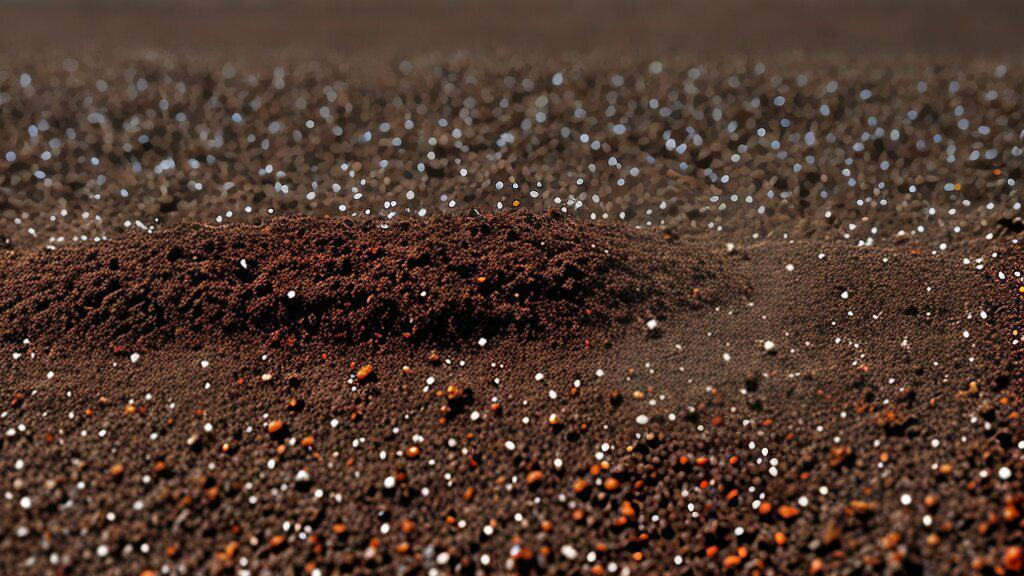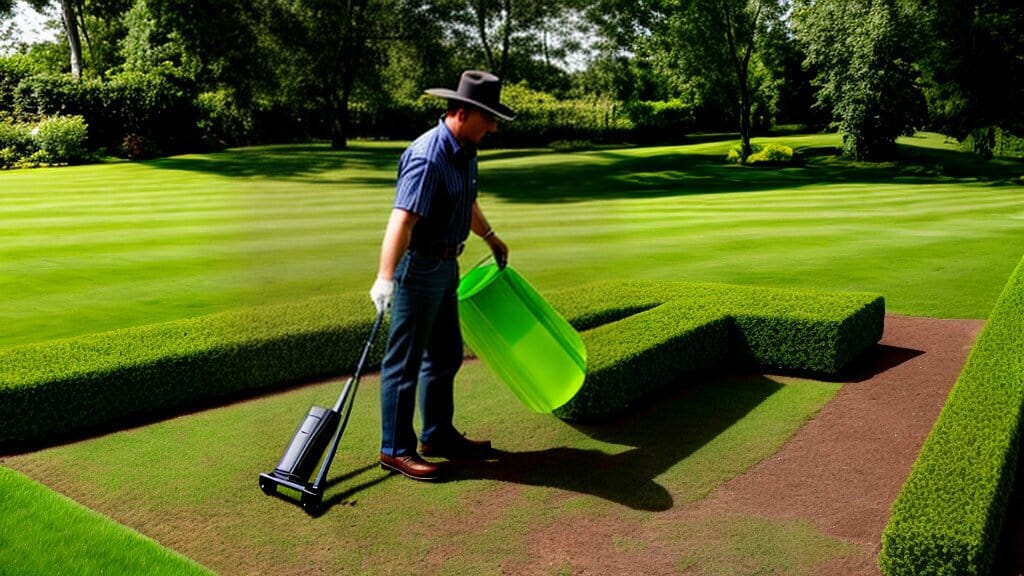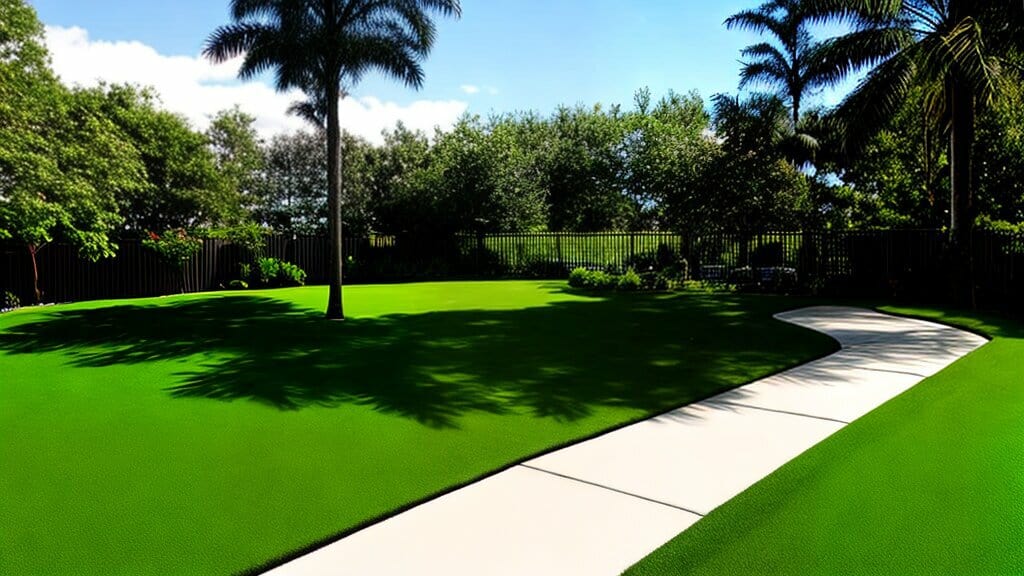Peat moss is a popular gardening and lawn care additive that has been used for decades. Not only is it cost-effective, but it also provides several benefits when it comes to grass growth.
So, what does peat moss do for grass? In this article, we’ll explore the ways in which peat moss can improve soil structure, retain moisture, and promote nutrient availability to ultimately enhance lawn growth.
Key Takeaways:
- Peat moss is a common gardening and lawn care additive that has several benefits for grass growth.
- Peat moss can improve soil structure, retain moisture, and promote nutrient availability.
- The improved soil conditions provided by peat moss can lead to healthier and faster grass growth.
Understanding Peat Moss
Peat moss is a common additive used in gardening and lawn care. It is formed from the accumulation of dead plant material in wetland environments over thousands of years. Peat moss is composed of partially decomposed organic matter, which makes it a rich source of nutrients for plants and beneficial for grass growth.
Peat moss is highly valued for its ability to improve soil structure. It is made up of tiny particles that help to loosen compacted soil, allowing for better drainage and root development. This improved soil structure also reduces soil erosion and improves soil fertility, creating a healthier environment for grass to grow.
In addition to improving soil structure, peat moss has the ability to retain moisture in the soil. Its unique sponge-like texture creates a moisture-holding capacity in the soil, reducing water evaporation and preventing dryness. This is essential for healthy grass growth, as water is a critical component for plant growth and survival.
Peat moss is also beneficial for grass growth because of its ability to promote nutrient availability in the soil. It has a high cation exchange capacity, which means it can absorb and hold onto essential nutrients such as nitrogen, phosphorus, and potassium. This makes these nutrients more accessible to the grass roots, promoting healthier growth and overall lawn health.
Overall, peat moss is a valuable tool for promoting grass growth and enhancing lawn health. Its ability to improve soil structure, retain moisture, and increase nutrient availability make it a popular choice among gardeners and lawn care professionals.

Improving Soil Structure
Using peat moss in lawn care can greatly improve soil structure and promote a healthier growing environment for grass. Peat moss is an organic material that can help loosen compacted soil, providing better drainage and root development. It has a fibrous and spongy texture that can reduce soil erosion and improve soil fertility by absorbing and retaining water and nutrients.
The composition of peat moss consists of partially decomposed plants, primarily sphagnum moss, that accumulate over thousands of years in peat bogs. The unique structure and properties of peat moss make it an ideal soil conditioner for grass. It is acidic with a pH level around 4.4, which is beneficial for certain types of grass that thrive in acidic soil.
Applying peat moss to your lawn can be done in several ways. It can be spread over the surface of the soil and raked in, or mixed into the soil before planting. The recommended amount of peat moss to use varies depending on the condition of your soil and the specific needs of your grass. A good rule of thumb is to use 2 to 3 cubic feet of peat moss per 100 square feet of lawn.
When using peat moss, it is important to incorporate it into the soil properly and water it adequately. The peat moss should be mixed with the top 6 inches of soil to allow for proper root development. After applying the peat moss, the soil should be watered thoroughly to ensure that it is evenly distributed and to activate its moisture-retaining properties.

In summary, utilizing peat moss in lawn care can improve soil structure, reduce soil erosion, and enhance soil fertility. Its unique properties of water and nutrient retention make it an excellent soil conditioner for grass. Incorporating peat moss into your lawn care routine can lead to healthier and greener grass growth.
Promoting Nutrient Availability
Peat moss not only improves soil structure and moisture retention but also promotes the availability of essential nutrients for grass growth. Its high cation exchange capacity (CEC) allows it to absorb and hold onto important nutrients, such as nitrogen, phosphorus, and potassium, making them more accessible to the grass roots.
With peat moss in the soil, these nutrients are less likely to leach away or evaporate, ensuring that they are available for a longer period of time. This promotes healthier and more sustained growth, leading to a greener and fuller lawn.

Furthermore, the addition of peat moss to the soil can also improve the soil’s pH level. Since it is naturally acidic, it can help lower the soil’s pH, making it more suitable for grass growth. This is especially beneficial for soils that are naturally alkaline or have had lime added to them.
Promoting Nutrient Availability
Peat moss is not just a soil conditioner that improves soil structure and moisture retention, but it also enhances the nutrient availability in the soil. Due to its composition, peat moss has a high cation exchange capacity, meaning it can absorb and hold onto essential nutrients like nitrogen, phosphorus, and potassium. This makes these nutrients more available to the grass roots, supporting healthier growth and development.
In addition to its ability to hold onto nutrients, peat moss also contains trace elements like iron, copper, and manganese, which are vital for healthy plant growth. These trace elements are not always naturally present in the soil, so adding peat moss can supplement these necessary nutrients.
Using peat moss for nutrient availability can also have environmental benefits. By reducing the need for chemical fertilizers, peat moss helps prevent the contamination of groundwater and soil, making it a sustainable option for lawn care.

“Peat moss is an excellent soil amendment that can enhance the nutrient availability in the soil, supporting healthy and vibrant lawn growth.”
Enhancing Lawn Growth
Peat moss has several benefits for grass growth, making it a popular additive in lawn care. The improved soil structure provided by peat moss promotes better root development, allowing your grass to access vital nutrients and water.

By retaining moisture in the soil, peat moss helps to prevent dryness and supports healthy grass growth. This moisture-holding capacity also reduces water evaporation, meaning your lawn is well-hydrated even during dry spells.
The increased nutrient availability provided by peat moss also plays a significant role in promoting healthy lawn growth. The organic matter in peat moss absorbs and holds onto essential nutrients such as nitrogen, phosphorus, and potassium, making them more accessible to your grass roots. This promotes stronger, healthier grass growth and can help prevent nutrient deficiencies.
Overall, the enhanced soil structure, moisture retention, and increased nutrient availability provided by peat moss make it an effective tool for promoting lawn growth. By incorporating peat moss into your lawn care routine, you can achieve a greener, healthier lawn that looks great all year round.
How to Use Peat Moss for Grass
Knowing how to use peat moss for grass is essential to ensure maximum benefits for your lawn. Follow these practical tips for incorporating peat moss into your lawn care routine:
- Prepare the soil: Before applying peat moss, remove any debris, rocks or weeds from the soil. Loosen the soil with a rake or tiller to create a crumbly texture that allows for better water retention and root development.
- Determine the amount: The recommended amount of peat moss to use is 1 to 2 inches applied evenly across the lawn. However, the amount may vary depending on the current condition of the soil and the amount of sunlight your lawn receives.
- Incorporate properly: Peat moss should be mixed thoroughly into the top 6 inches of soil. This will help to ensure that the peat moss can provide maximum benefits to your grass and improve soil structure.
- Water adequately: After applying peat moss, water the area thoroughly to help the peat moss retain moisture and provide essential nutrients to the soil.
- Consider timing: It’s best to apply peat moss in the spring or fall, when the soil is moist and temperatures are cooler. Avoid applying peat moss during the hot summer months, as it may dry out the soil and harm your grass.
| Preparation Checklist | |
|---|---|
| ✓ Remove debris, rocks, and weeds from the soil | ✓ Determine the amount of peat moss to use |
| ✓ Loosen the soil with a rake or tiller | ✓ Incorporate peat moss properly into the soil |
| ✓ Water the area thoroughly after applying peat moss | ✓ Apply peat moss during the spring or fall when temperatures are cooler |
By following these tips, you can ensure that your grass receives the maximum benefits of peat moss and grows healthy and green.

Other Considerations and Alternatives
Although peat moss offers several benefits for grass growth, there are some considerations and alternatives to keep in mind.
Acidic Nature: Peat moss is naturally acidic, which may not be suitable for all grass types. If you have alkaline soil, using peat moss can further lower the pH level, potentially affecting the grass growth. In such cases, it is advisable to do a soil test and consult a gardening expert before using peat moss.
Environmental Concerns: Peat moss is primarily harvested from bogs, which are fragile ecosystems that take centuries to form. The removal of peat moss can have a detrimental impact on the environment, including loss of biodiversity and increased carbon emissions. To reduce the environmental impact, you can consider using alternatives to peat moss.
Alternatives: There are several organic alternatives that can provide similar benefits for grass growth. Compost, for example, is a rich source of nutrients that can enhance soil structure and fertility. Leaf mold, mushroom compost, and coconut coir are other options that offer benefits similar to peat moss. Experiment with different alternatives to find what works best for your lawn.

“Using organic matter such as peat moss, compost, and leaf mold can improve soil structure and fertility, which in turn supports healthy grass growth.”
Conclusion
In conclusion, incorporating peat moss into your lawn care routine can provide numerous benefits for your grass growth. Its ability to improve soil structure, retain moisture, and enhance nutrient availability can promote healthier and faster grass growth. By utilizing peat moss in your lawn care, you can achieve a greener and more vibrant lawn.
Considerations and Alternatives
It is important to note that while peat moss can be highly beneficial for grass growth, it also has some potential drawbacks. Its acidic nature can be detrimental to certain plant species, and its extraction can have negative environmental impacts.
Fortunately, there are other organic alternatives available that can provide similar benefits for grass growth. For example, compost can improve soil structure and provide essential nutrients to the soil.
Using Peat Moss for Grass
If you do choose to incorporate peat moss into your lawn care routine, it is important to follow proper usage guidelines. Prepare the soil before applying peat moss, and incorporate it into the soil properly. Water it adequately and consider any precautions or considerations when using peat moss.
Overall, using peat moss for grass can be a valuable tool for achieving a healthier and greener lawn. By understanding its benefits and using it properly, you can enhance your lawn growth and improve the overall visual appeal of your yard.
FAQ
Q: What does peat moss do for grass?
A: Peat moss enhances lawn growth by improving soil structure and promoting healthier grass growth.
Q: What is peat moss?
A: Peat moss is a natural additive used in gardening and lawn care, formed from decomposed plant material.
Q: How does peat moss improve soil structure?
A: Peat moss helps loosen compacted soil, improving drainage, and root development. It also reduces soil erosion and improves fertility.
Q: How does peat moss retain moisture for healthy grass?
A: Peat moss creates a moisture-holding capacity in the soil, reducing water evaporation and preventing dryness, promoting healthy grass growth.
Q: How does peat moss promote nutrient availability?
A: Peat moss absorbs and holds onto essential nutrients, making them more accessible to grass roots, supporting healthy growth.
Q: How does peat moss enhance lawn growth?
A: Peat moss improves soil structure, retains moisture, and promotes nutrient availability, leading to healthier and faster grass growth.
Q: How can peat moss be used for grass?
A: Prepare the soil, apply the recommended amount of peat moss, incorporate it properly, and water adequately. Consider any precautions or considerations.
Q: Are there any other considerations or alternatives to peat moss?
A: Peat moss has some potential drawbacks, such as acidity and environmental concerns. There are other organic alternatives available for similar grass growth benefits.
